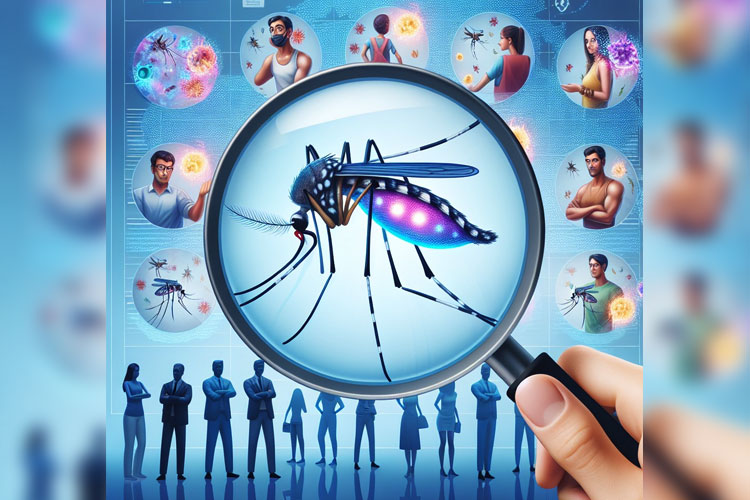
TIMESINDONESIA, JAKARTA – Director General of Disease Prevention and Control at the Ministry of Health, Maxi Rein Rondonuwu, has emphasized that there is no correlation between the spread of Wolbachia-carrying mosquitoes and the aggressiveness of Aedes aegypti mosquitoes, the culprit behind dengue fever.
According to him, the characteristics of Aedes aegypti mosquitoes in areas where Wolbachia mosquitoes have been released remain unchanged. Additionally, the signs and symptoms of individuals bitten by Aedes aegypti mosquitoes remain the same, including high fever accompanied by muscle pain, nausea, vomiting, headaches, nosebleeds, and gum bleeding.
Advertisement
"Overall, the characteristics and symptoms remain the same. Moreover, there is no difference in the number of Aedes aegypti mosquitoes before and after the release of Wolbachia," Maxi said in a statement received in Jakarta, early Tuesday.
Maxi revealed that the spread of Wolbachia-carrying mosquitoes has proven effective in reducing dengue fever cases in Yogyakarta City. Since its initial release in 2017, he said, Wolbachia-carrying mosquitoes have been proven capable of reducing dengue cases by 77 percent and hospital admissions by 86 percent.
According to observations by the Ministry of Health and health agencies in Semarang, Kupang, Bontang, Bandung, and West Jakarta—cities where Wolbachia mosquitoes have been released—the concentration of Wolbachia-carrying Aedes aegypti mosquitoes in the wild is around 20 percent after the release. This figure, according to him, is still below the ideal percentage of Wolbachia-carrying Aedes aegypti mosquitoes, which should reach 60 percent in the wild.
"After its population reaches 60 percent, the release of Wolbachia mosquito containers will be withdrawn, and the results of the decrease in new dengue cases will begin to be seen after 2 years, 4 years, 10 years, and so on, as implemented in Yogyakarta City," he said.
Director General Maxi assured that the application of this technology is safe as it utilizes the natural bacterium Wolbachia found in insects and has undergone relatively lengthy research.
The Wolbachia technology research in Yogyakarta lasted for 12 years, from 2011 to 2023. This research went through four stages, starting from feasibility and safety phase (2011—2012), limited-scale release phase (2013—2015), large-scale release phase (2016—2020), and implementation phase (2021—2022).
Globally, he said, the first study on the application of Wolbachia for Dengue Elimination (AWED) in Yogyakarta with a Cluster Randomized Controlled Trial (CRCT) design is of the highest standard.
In Indonesia, he continued, risk analysis was initiated by the Ministry of Research, Technology, and Higher Education and the Ministry of Health's Research and Development Agency involving 20 experts from various fields. The analysis results showed that the release of Wolbachia-carrying mosquitoes has very low risks.
"In the next 30 years, the likelihood of increased danger from the spread of Aedes aegypti carrying Wolbachia can be neglected (negligible)," he said.
In 2023, WHO recommended the use of Wolbachia-carrying Aedes aegypti mosquitoes. Although Wolbachia-carrying mosquitoes have been released, Maxi urged the public to complement prevention efforts by implementing mosquito breeding site eradication (PSN) with the 3M plus approach.
He said these steps can be taken by draining water storage containers, covering water storage places, and recycling various items that pose a risk of becoming breeding grounds for Aedes aegypti mosquitoes, which cause dengue fever in humans. (*)
**) Ikuti berita terbaru TIMES Indonesia di Google News klik link ini dan jangan lupa di follow.
| Editor | : Khodijah Siti |
| Publisher | : Sofyan Saqi Futaki |

